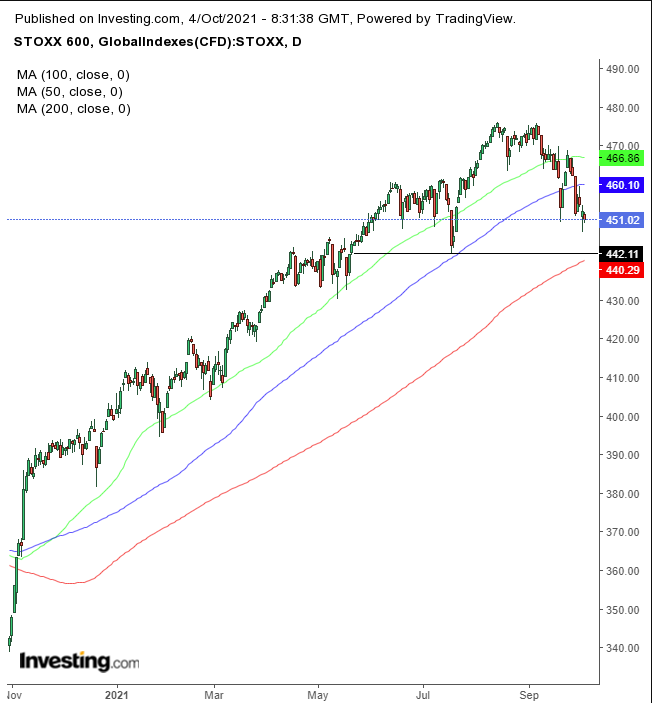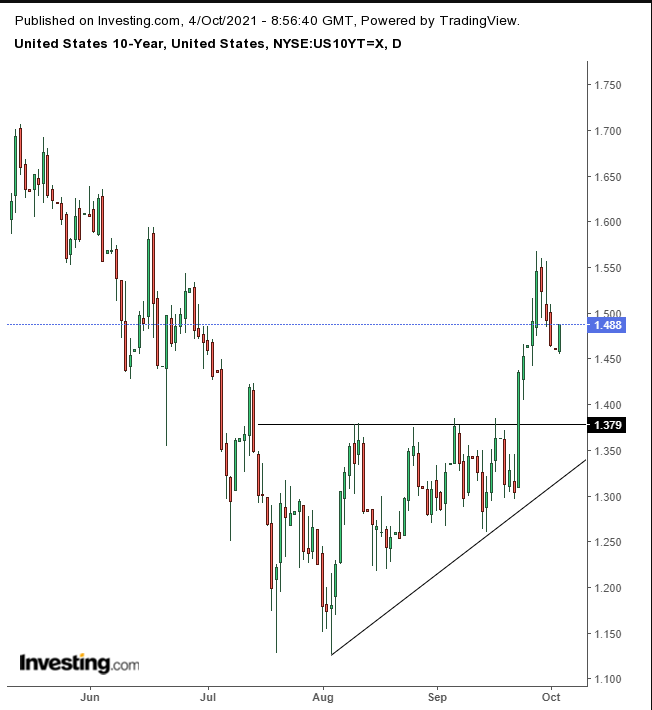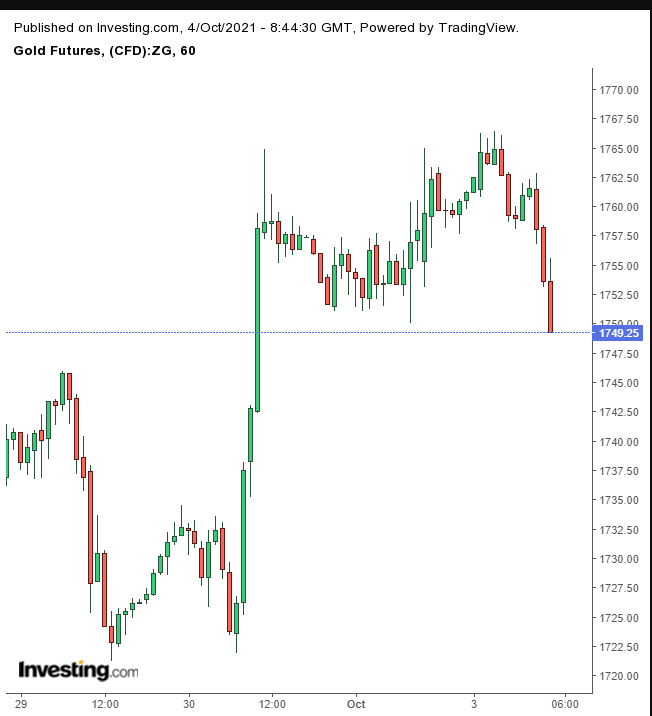- Fears of stubborn, high inflation accelerate, amid slowing growth
- Gold fell despite risk-off sentiment and dollar weakness
- Oil slumped
- In the US, ISM non-manufacturing PMI for September is released on Tuesday.
- The Reserve Bank of Australia will announce its policy decision on Tuesday.
- On Wednesday, New Zealand announces its interest rate decision.
- The FTSE 100 was trading flat
- The STOXX 600 fell 0.6%
- Futures on the S&P 500 fell 0.6%
- Futures on the NASDAQ 100 fell 0.8%
- Futures on the Dow Jones Industrial Average fell 0.5%
- The MSCI Asia Pacific Index fell 0.6%
- The MSCI Emerging Markets Index fell 0.6%
- The British pound was little changed at $1.3542
- The Dollar Index rose 0.1%
- The euro was little changed at $1.1601
- The Japanese yen was little changed at 111.15 per dollar
- The offshore yuan fell 0.3% to 6.4543 per dollar
- Britain’s 10-year yield advanced one basis point to 1.01%
- The yield on 10-year Treasuries advanced two basis points to 1.48%
- Germany’s 10-year yield was little changed at -0.22%
- Brent crude fell 0.6% to $78.79 a barrel
- Spot gold fell 0.4% to $1,753.78 an ounce
Key Events
Rising fears of stagflation motivated investors to sell US equity futures and European shares on Monday. Contracts on the Dow, S&P, NASDAQ and Russell 2000 are all trading lower ahead of the New York open.
Bitcoin is slightly lower but continues to tread water after a strong rally last week.
Global Financial Affairs
US futures on the major benchmarks were uniformly in the red as the trading week kicked off, they tracked an all-red Asia session from which European stocks took their cues this morning. The market's concern is stagflation, the 'S' word economists prefer to avoid uttering. Stagflation refers to a period when inflation remains stubbornly high, costs keep rising while unemployment escalates so that demand becomes stagnant and economic growth slumps.
Economists prefer to forget one of the most challenging times in US economic history—the Great Inflation, the period from 1965 to 1982 when stagflation was rampant. Interest rates rose to almost 20% and consumers had to wait in long gasoline lines reminiscent of the rations of the Great Depression forty years earlier.
Still, the notion of stagflation remains a concept at this point, rather than the reality. On Monday, sectors sensitive to the economic cycle outperformed.
Contracts on the Russell 2000, the index where small domestic firms reliant on growth are listed, fell by less than half compared to futures on the NASDAQ 100, home to mega cap technology companies which benefit during economic downturns. The Dow Jones Industrial Average—which includes blue chip value stocks—was the second-best performer this morning after the small-cap index. While it may be an utter fluke, it could be a sign of faith in the recovery, contrary to the current stagflation narrative making the rounds.
Most of Asia was in negative territory after trading in Evergrande (HK:3333) was halted in Hong Kong, along with those of its property management arm, after rumours of a unit stake sale, due to its looming debt default.
In Europe, the STOXX 600 Index opened lower, dragged down by carmakers and luxury stocks as fears of a disruption to the economic recovery from China grew after additional coronavirus restrictions were been introduced.

The pan-European benchmark fell to a two-month low following its worst week since February, dragging the price below the 100 DMA for the fifth day, since first crossing over it in November. The price may be forming a H&S top.
This view however, contradicts the price action in US markets. On Friday the S&P 500 successfully retested the neckline of a H&S, having found resistance.

The price may have completed its return move.
Investors returned to selling 10-year Treasuries.

Having found support by the 200 DMA, the move was a resumption of the ascending triangle breakout.
The dollar gave up earlier gains, extending a selloff to the third straight day, for the first time in nearly a month.

We consider any decline to be a buying opportunity. As far as we’re concerned, this is part of a return move, after completing a massive double bottom.
Gold fell for the third straight hour during its first daily decline in four sessions. It is perplexing that the yellow metal traded lower when both the USD and stocks slid.

The price may have completed an hourly double top.
Bitcoin declined, extending a sideways move for the third day. After slumping 20% in September, the cryptocurrency recovered some of those losses at the start of October but speculation on regulatory clampdowns is expected to continue.
The cryptocurrency, along with gold, received a big recommendation from Robert Kiyosaki, author of Rich Dad, Poor Dad. He said that the “biggest crash in world history” will take place this month. October is considered to be a dangerous month for markets.
Oil slid ahead of today's OPEC+ meeting, after market chatter had the group of producers weighing the option of increasing production this month to more than the already agreed on 400,000 barrels a day.

The price was struggling below the Sept. 28 high, which produced a High Wave candle at the July 6 peak’s resistance.
